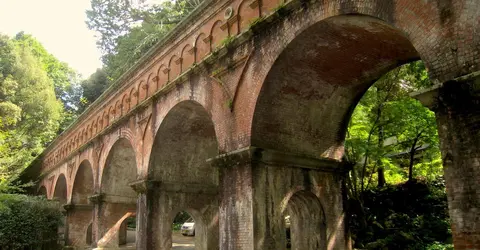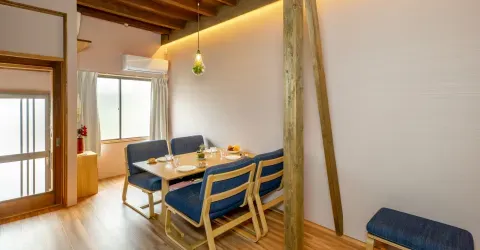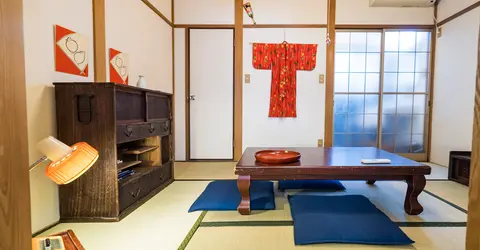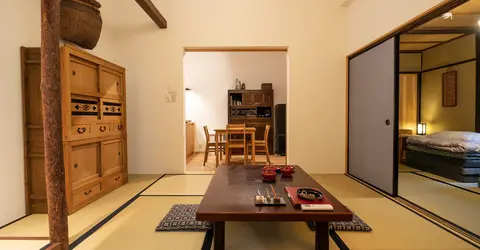Lake Biwa Canal Cruise 琵琶湖疎水通船
For the love of Lake Biwa water
This canal was a dream of the inhabitants of Kyoto, to receive water from Lake Biwa as well as to make it a waterway. Abandoned after having been widely used throughout the first half of the 20th century, only a small portion remains today which is offered for tourist navigation for part of the year.

The Biwako-sosui canal fountain and its museum in the background at Keage
Wikimedia Commons
The rebirth of the canal
This project to make tourist cruises on the old channel of Lake Biwa was initiated by the water management and treatment office of the city of Kyoto . Since 2015, every spring sees boats sailing like the good old days. From a few days in April to the beginning, the year 2018 announces 82 days of navigation , spread out from March 29 to November 30. This charming walk of almost eight kilometers lasts 50 minutes between the city of Otsu and Keage (in Kyoto). In the spring, the cherry blossoms attract people just as much as the red foliage of the kôyô in autumn which unfold along the canal.
The grand canal project
The Lake Biwa Canal, or Biwako-sosui, is a river artery built in 1890 , during the Meiji era (1868-1912). It had been the dream of Kyotoites for centuries to have a connection with Lake Biwa . The plan was to make a waterway from Otsu at the mouth of Lake Biwa, pass under Yamashina Mountain to reach Keage, then continue to Fushimi to arrive at the Uji River. Twenty kilometers long in all, which saw many boats pass from 1891 until 1948.
To be able to climb a hill between Keage and Okazaki, a kind of funicular for boats had been built for more than 500 meters. Today, the facilities are still visible but transformed into a very pleasant walking path with its cherry blossoms in spring.
See also: The Shirakawa Canal
The resulting modernity
When it was inaugurated in 1891, this canal made it possible to build the first hydroelectric plant in Japan , supplying the city of Kyoto with energy, especially its large network of trams. All of this was very modern for the time and benefited other sectors such as drinking water supply, irrigation and industry.
The Lake Biwa Canal made it possible to sail boats with passengers between Otsu and Kyoto, but especially goods, rice, wood, coal, bricks, etc... In 1925, there were up to 150 boats every day who made the trip.
In the middle of the 20th century, the number of users began to fall because competition with the railway (much faster) and road vehicles (more practical) was becoming increasingly strong.
To read: Descent of the Hozu River in Kyoto

Nanzen-ji Viaduct in Kyoto
Wikimedia Commons
Towards the temples
Whether you arrive by boat from Otsu or from Kyoto, via the Keage subway station, the pretty walk will take you to Nanzen-ji temple . You can admire a magnificent brick bridge 93 meters long and 14 meters high , a former viaduct which was used to carry water to the district of the philosophers' path .
In Keage you can also visit the Lake Biwa Canal Museum , opened for the 100th anniversary of its creation. You will know everything about the project since its beginnings, its history, photographs and memorabilia (free, open from 9 a.m. to 5 p.m. but closed on Mondays).
Address, timetable & access
Address
Phone
+81 (0) 75-365-7768 (JTB NishiNihon)Timetable
Keage Station (Tozai Line in Kyoto) or Miidera Station (Ishiyama Sakamoto Line in Otsu)Price
From 4,000 to 8,000 yenAccess
Reservations from February 1, 2018



































